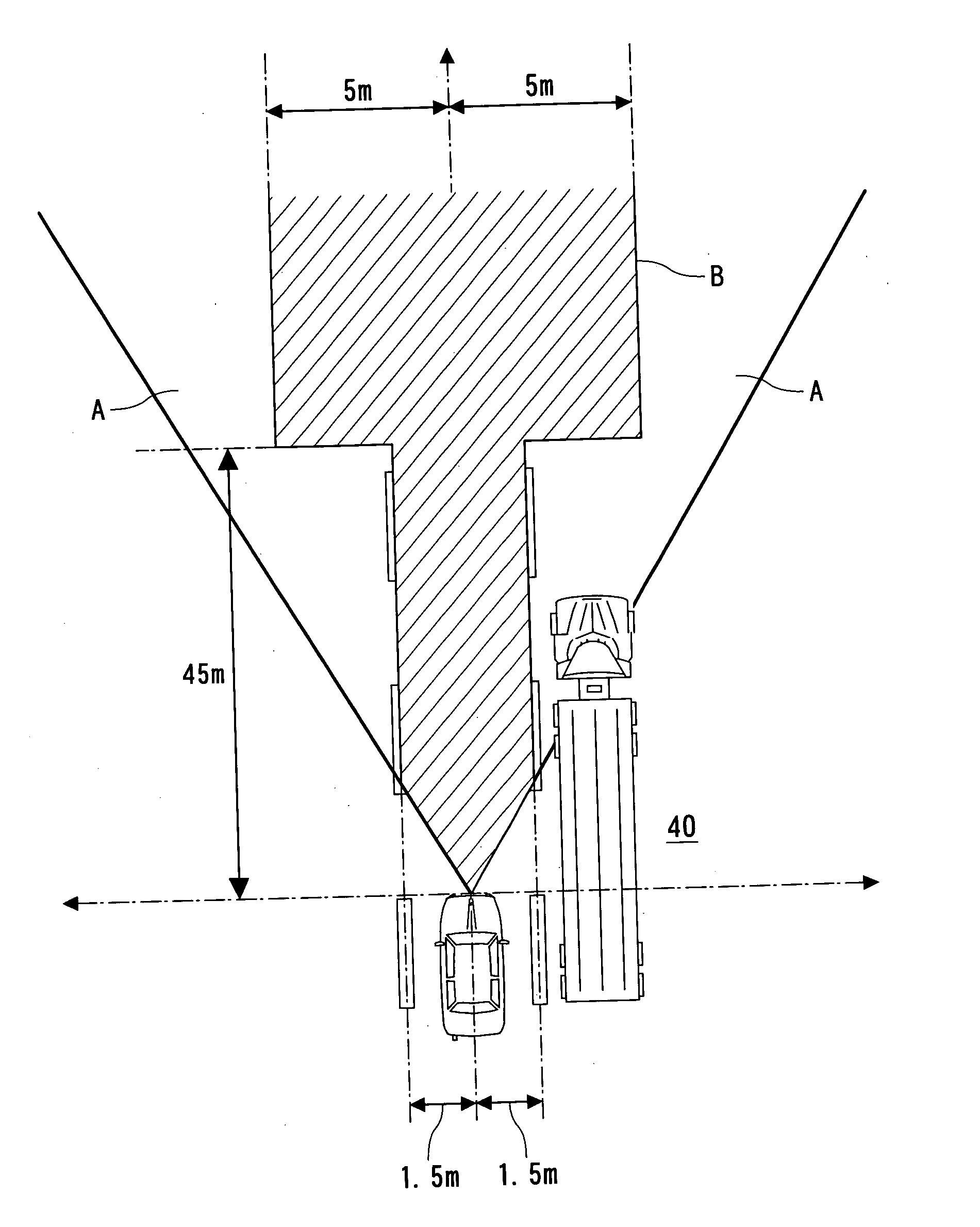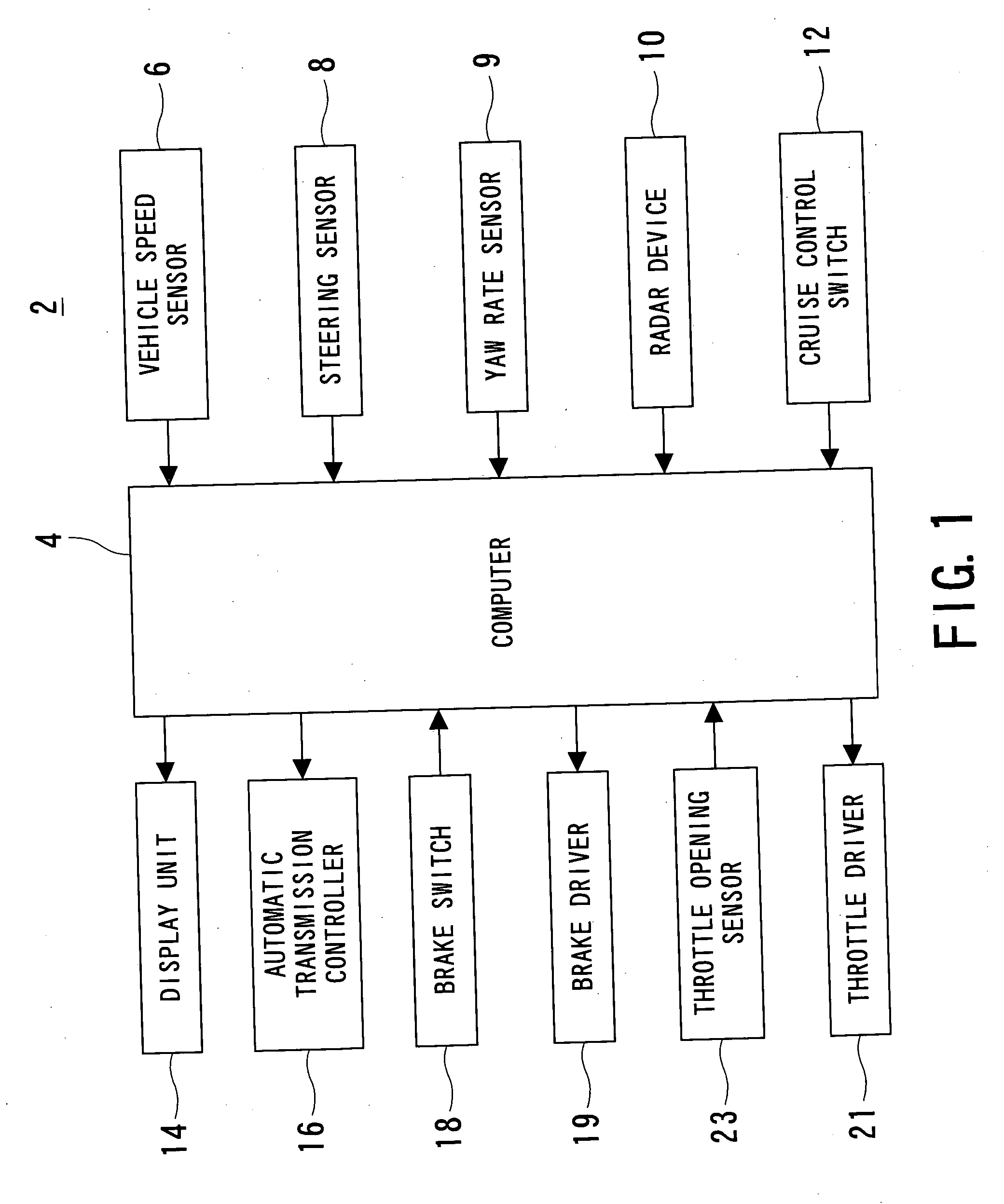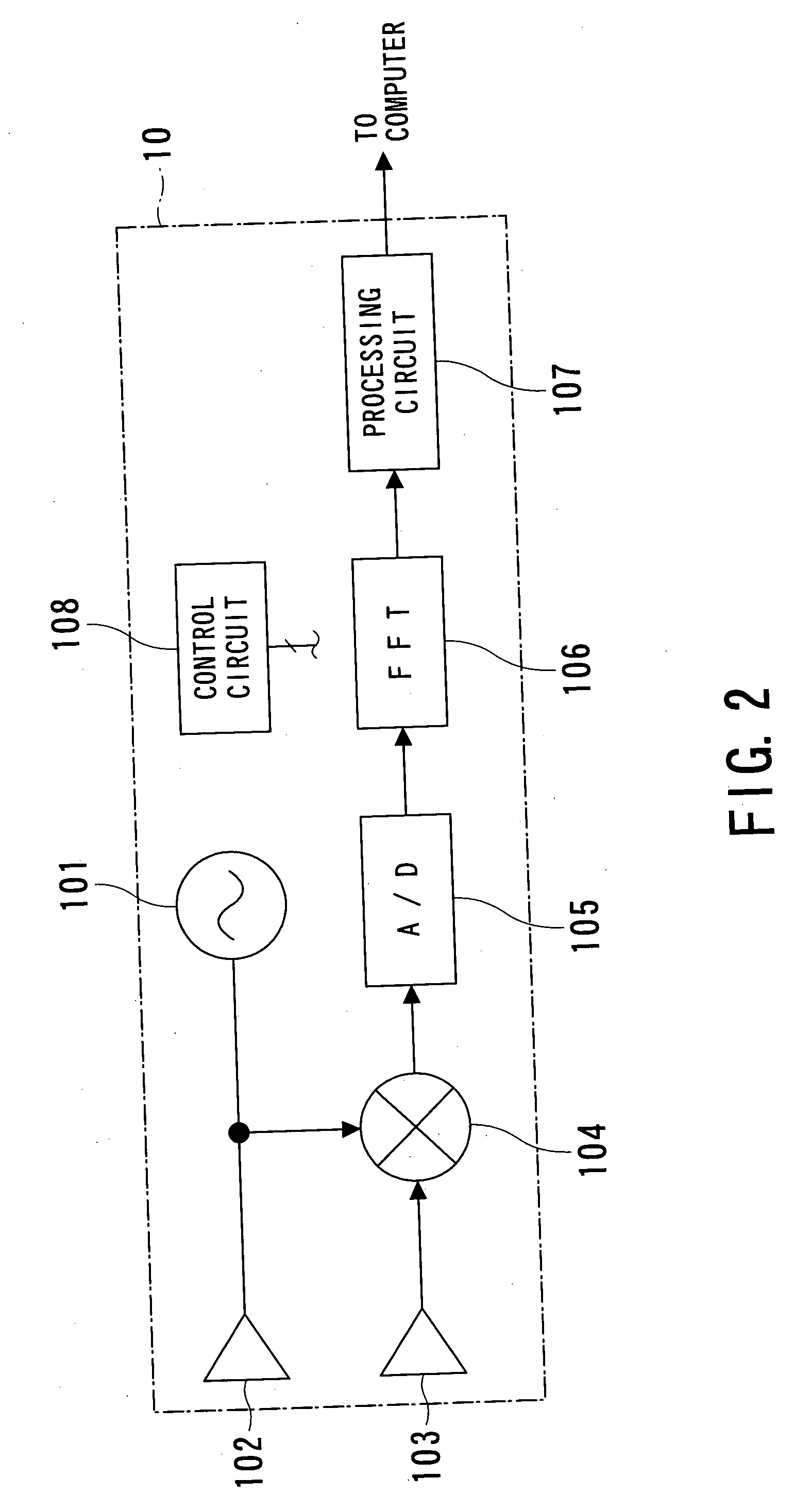Method and apparatus for recognizing predetermined particular part of vehicle
a predetermined part and vehicle technology, applied in direction finders, instruments, computing, etc., can solve the problems of erroneously recognizing objects, avoiding conventional object recognizing techniques, and unable to remove effectively
- Summary
- Abstract
- Description
- Claims
- Application Information
AI Technical Summary
Benefits of technology
Problems solved by technology
Method used
Image
Examples
first modification
(First Modification)
A first modification relates to the cabin counter CA to count the value indicative of the foregoing possibility.
The determining processing in the foregoing embodiment is programmed to repeat the processing at intervals of 100 msec. Hence if a wave-reflecting object being determined satisfies the determining condition “C” or the determining conditions “E” and “F” sequentially during a predetermined period of time, the cabin counter CA assigned to the object being determined is obliged to be on the decrease.
In such a case, a lower limit can be given to the count of the cabin counter CA. When the count reaches a predetermined value (e.g., −600 corresponding to a period of 10 seconds starting from the initialization of the cabin counter CA), a wave-reflecting object measured by the count of the cabin counter CA is forcibly decided as being an object recognized on a reflected wave from the rear part of a vehicle. On performing such a decision, the object being de...
second modification
(Second Modification)
A second modification is concerned with the determining conditions A to C to be prepared for the cabin counter adding / subtracting processing.
In the foregoing embodiment, each of the determining conditions A to C is composed of the determining parameters of the relative speed difference, lateral position difference, and variable distance range Za and the determination of whether or not all the determining conditions are met has been necessary. However, this is not a decisive list, but any one or two of the determining parameters may be used for determination in each of the determining conditions A to C.
third modification
(Third Modification)
A third modification relates to variations of the radar device 10 that uses electromagnetic wave such as millimeter wave. The radar device 10 may be replaced by any other means such as laser light or ultrasound wave.
PUM
 Login to View More
Login to View More Abstract
Description
Claims
Application Information
 Login to View More
Login to View More - R&D
- Intellectual Property
- Life Sciences
- Materials
- Tech Scout
- Unparalleled Data Quality
- Higher Quality Content
- 60% Fewer Hallucinations
Browse by: Latest US Patents, China's latest patents, Technical Efficacy Thesaurus, Application Domain, Technology Topic, Popular Technical Reports.
© 2025 PatSnap. All rights reserved.Legal|Privacy policy|Modern Slavery Act Transparency Statement|Sitemap|About US| Contact US: help@patsnap.com



